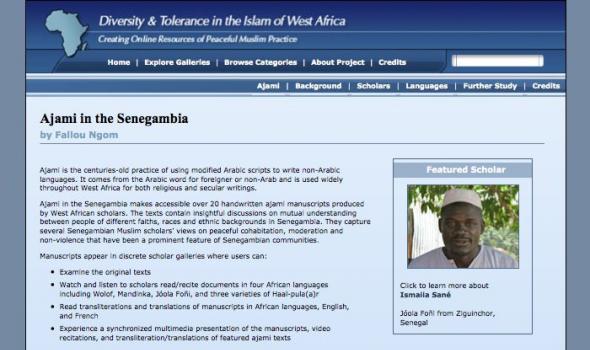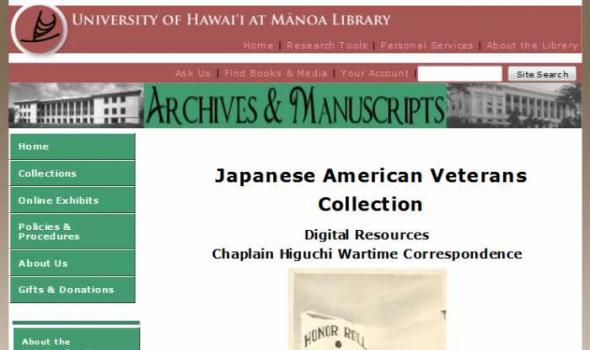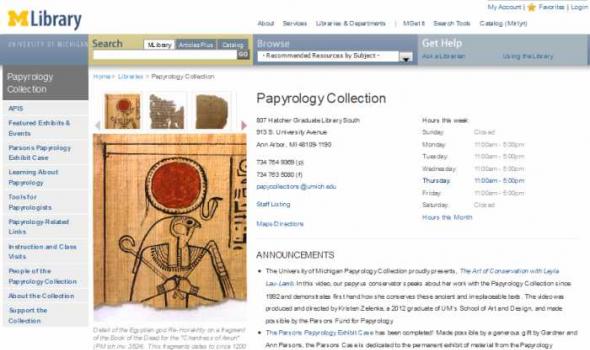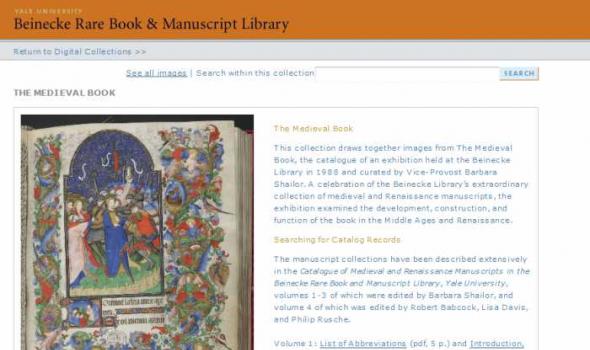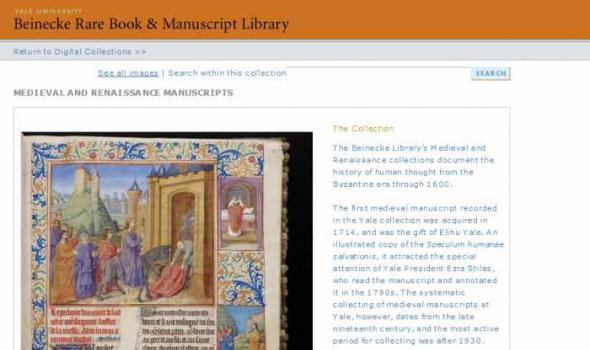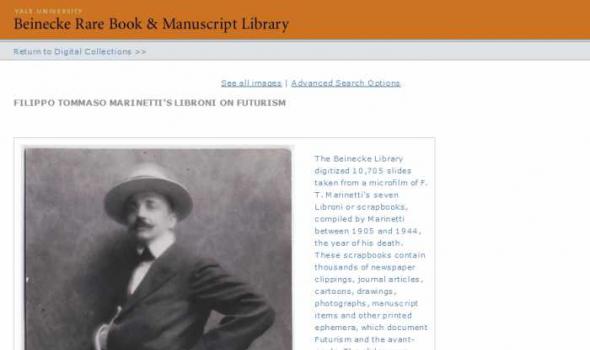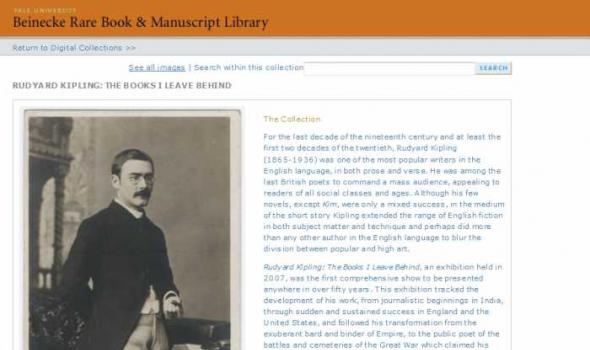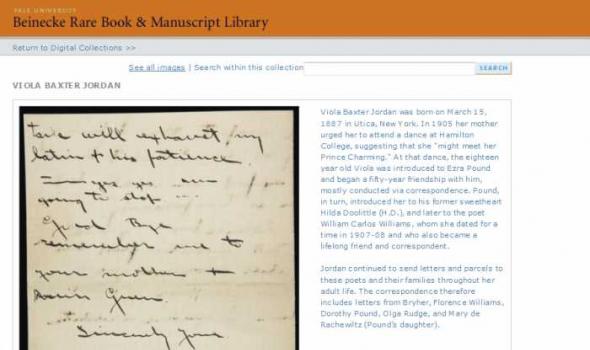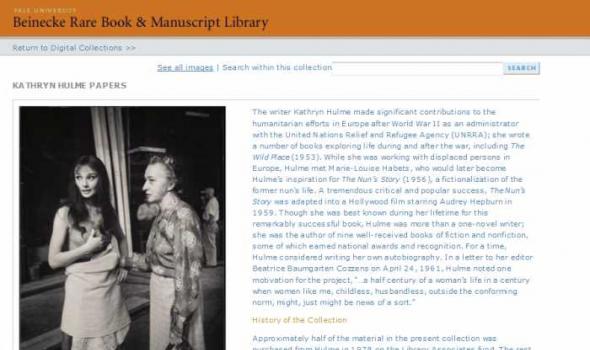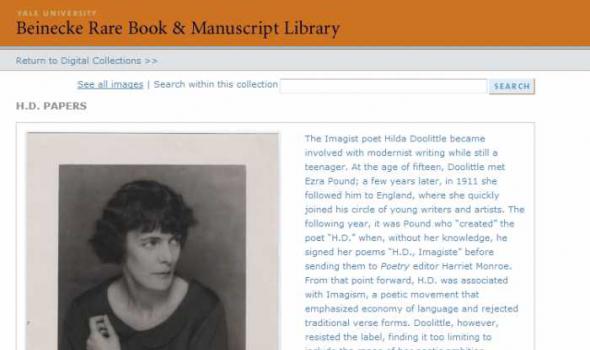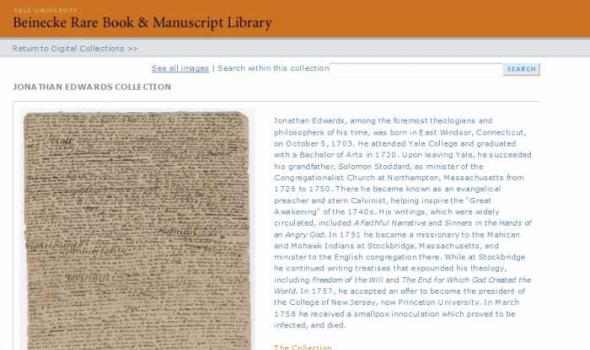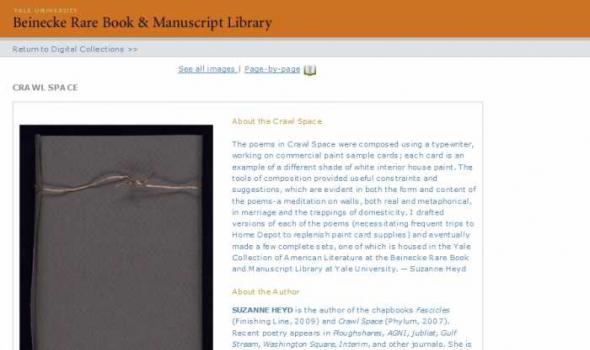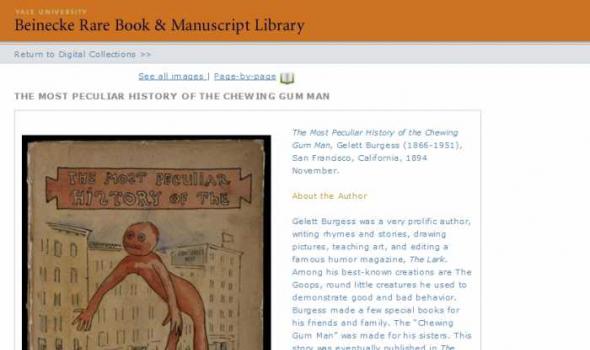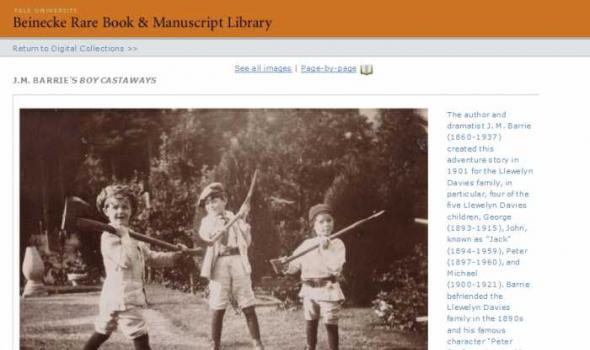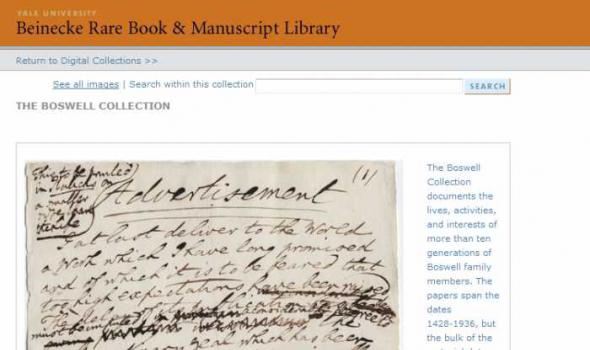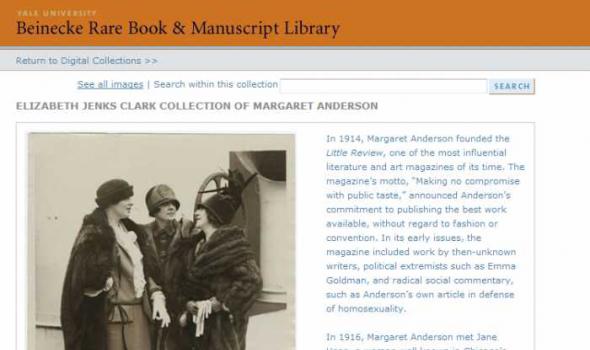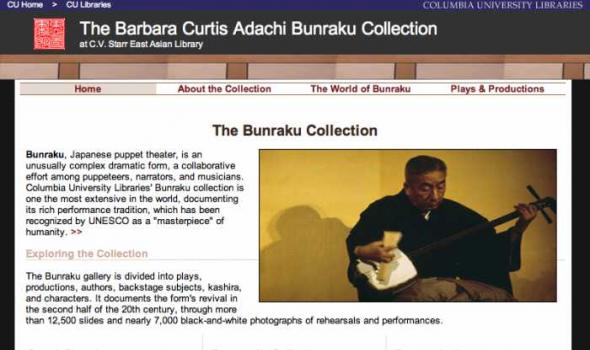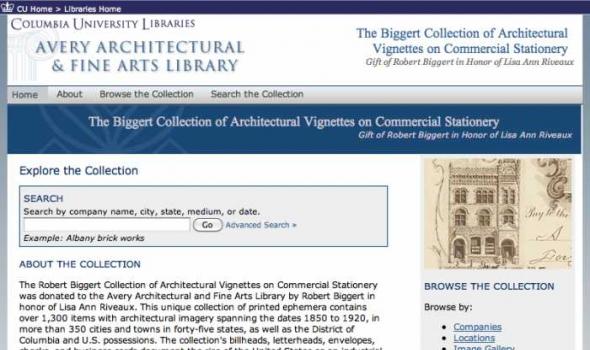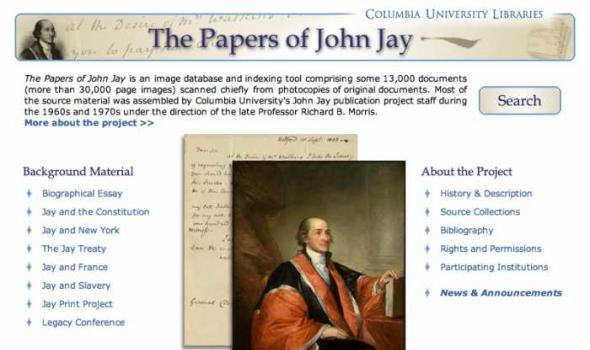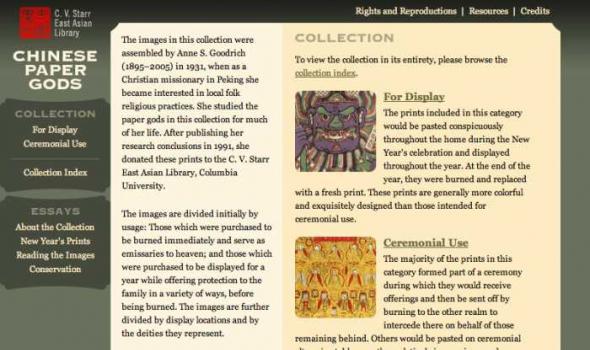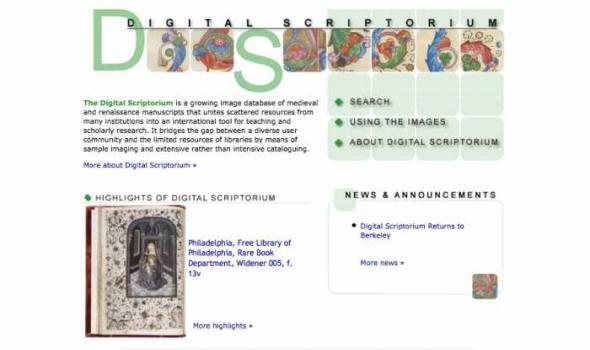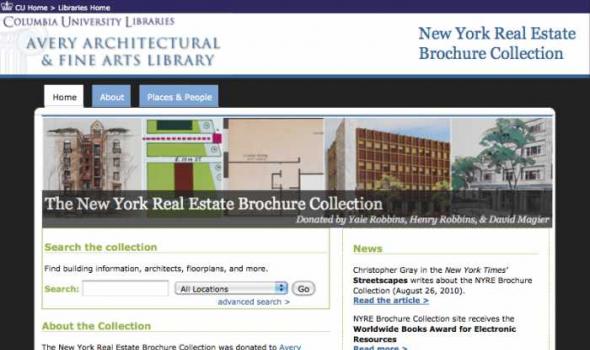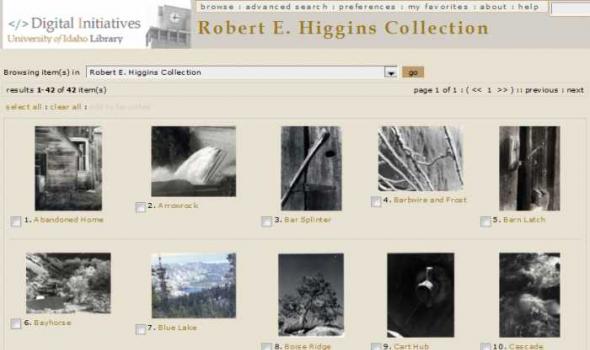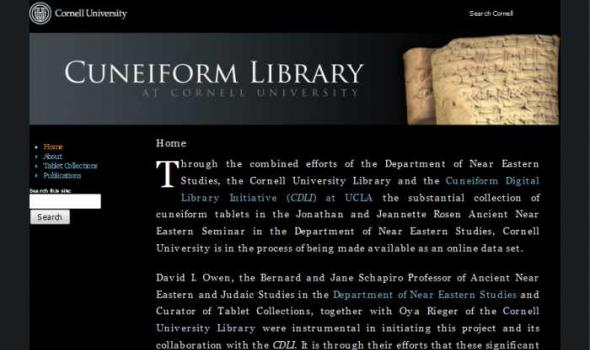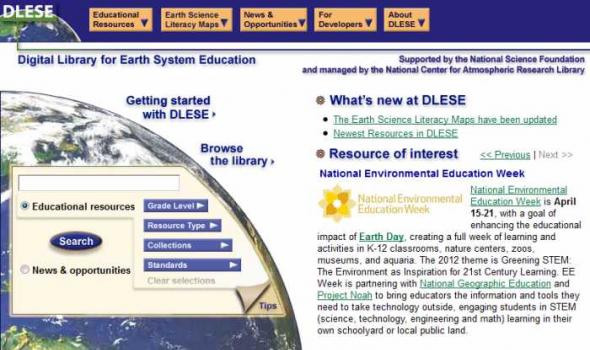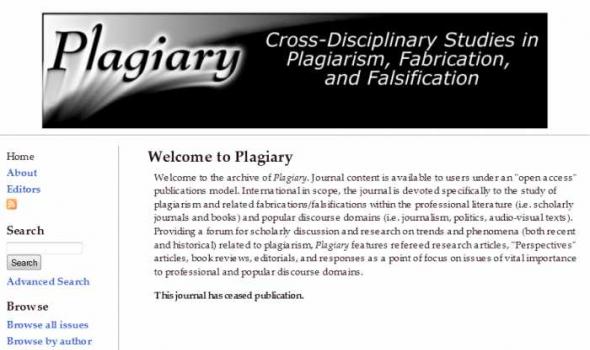Category: Literature & Poetry
Results
Ajami is the centuries-old practice of using modified Arabic scripts to write non-Arabic languages. It comes from the Arabic word for foreigner or non-Arab and is used widely throughout West Africa for both religious and secular writings.
Ajami in the Senegambia makes accessible over 20 handwritten ajami manuscripts produced by West African scholars. The texts contain insightful discussions on mutual understanding between people of different faiths, races and ethnic backgrounds in Senegambia. They capture several Senegambian Muslim scholars' views on peaceful cohabitation, moderation and non-violence that have been a prominent feature of Senegambian communities.
Japanese American Veterans Collection Chaplain Higuchi Wartime Correspondence During World War II, Hiro Higuchi of Hawaii volunteered to serve as one of two chaplains attached to the 442nd Regimental Combat Team, an all-Japanese American unit formed in January 1943. Following his enlistment, Higuchi attended the U.S. Army Chaplain School at Harvard University in the fall of 1943. In November 1943, he joined the soldiers of the 442nd RCT for intensive training at Camp Shelby, Mississippi. In June 1944, Higuchi accompanied the 442nd RCT to Europe, where he served with the unit in Italy and France. Chaplain Hiro Higuchi returned home to Hawaii in December 1945.
ANNOUNCEMENTS The continued Web presence of the Papyrology Collection is made possible by: The University of Michigan Library , The National Endowment for the Humanities , The Dorot Foundation , The Center for Research on Learning and Teaching (CRLT) , U-M Office of the Vice President for Research , The R.G. Conger Fund, The Edwin E. and Mary U. Meader Papyrology Endowment, and The Parsons Fund. CONTACT We welcome your feedback on our web site. University Library 818 Hatcher Graduate Library South 913 S. University Avenue Ann Arbor, MI 48109-1190
About the Morgan | Introduction A complex of buildings in the heart of New York City, The Morgan Library & Museum began as the private library of financier Pierpont Morgan (1837–1913), one of the preeminent collectors and cultural benefactors in the United States. As early as 1890 Morgan had begun to assemble a collection of illuminated, literary, and historical manuscripts, early printed books, and old master drawings and prints. Mr. Morgan's library, as it was known in his lifetime, was built between 1902 and 1906 adjacent to his New York residence at Madison Avenue and 36th Street. Designed by Charles McKim of the architectural firm McKim, Mead & White, the library was intended as something more than a repository of rare materials.
This collection draws together images from The Medieval Book, the catalogue of an exhibition held at the Beinecke Library in 1988 and curated by Vice-Provost Barbara Shailor. A celebration of the Beinecke Library?s extraordinary collection of medieval and Renaissance manuscripts, the exhibition examined the development, construction, and function of the book in the Middle Ages and Renaissance. The manuscript collections have been described extensively in the Catalogue of Medieval and Renaissance Manuscripts in the Beinecke Rare Book and Manuscript Library, Yale University , volumes 1-3 of which were edited by Barbara Shailor, and volume 4 of which was edited by Robert Babcock, Lisa Davis, and Philip Rusche.
The Collection The Beinecke Library’s Medieval and Renaissance collections document the history of human thought from the Byzantine era through 1600. The first medieval manuscript recorded in the Yale collection was acquired in 1714, and was the gift of Elihu Yale. An illustrated copy of the Speculum humanae salvationis , it attracted the special attention of Yale President Ezra Stiles, who read the manuscript and annotated it in the 1790s. The systematic collecting of medieval manuscripts at Yale, however, dates from the late nineteenth century, and the most active period for collecting was after 1930.
The Beinecke Library digitized 10,705 slides taken from a microfilm of F. T. Marinetti's seven Libroni or scrapbooks, compiled by Marinetti between 1905 and 1944, the year of his death. These scrapbooks contain thousands of newspaper clippings, journal articles, cartoons, drawings, photographs, manuscript items and other printed ephemera, which document Futurism and the avant-garde. The slides were acquired by the Library in 1999, along with a detailed listing of virtually every item depicted. That detailed listing is the source of the bibliographic data currently linked to each image. The Libroni database contains bibliographic errors, items lacking description, and image legibility and sequencing problems.
The Collection Cite as: Filippo Tommaso Marinetti Papers. General Collection, Beinecke Rare Book and Manuscript Library, Yale University Related: Filippo Tommaso Marinetti's Libroni 10,705 slides taken from a microfilm of F. T. Marinetti's seven Libroni or scrapbooks, compiled by Marinetti between 1905 and 1944, the year of his death. Share |
For the last decade of the nineteenth century and at least the first two decades of the twentieth, Rudyard Kipling (1865-1936) was one of the most popular writers in the English language, in both prose and verse. He was among the last British poets to command a mass audience, appealing to readers of all social classes and ages. Although his few novels, except Kim , were only a mixed success, in the medium of the short story Kipling extended the range of English fiction in both subject matter and technique and perhaps did more than any other author in the English language to blur the division between popular and high art. Rudyard Kipling: The Books I Leave Behind , an exhibition held in 2007, was the first comprehensive show to be presented anywhere in over fifty years.
[Autographed letter signed] 1905 July 12, Wyncote, Pennsylvania [from] Ezra Pound These materials may be under copyright. To learn more, contact the Curator, Yale Collection of American Literature. Call Number: YCAL MSS 175 Related Collections Ezra Pound Papers, YCAL MSS 43 William Carlos Williams papers, YCAL MSS 116 H. D. Papers, YCAL MSS 24 Bryher papers, GEN MSS 97
was adapted into a Hollywood film starring Audrey Hepburn in 1959. Though she was best known during her lifetime for this remarkably successful book, Hulme was more than a one-novel writer; she was the author of nine well-received books of fiction and nonfiction, some of which earned national awards and recognition. For a time, Hulme considered writing her own autobiography.
Gift of Langston Hughes and bequest of the estate of Langston Hughes, ca. 1940-67. These materials may be under copyright. Permission from the Langston Hughes Estate is required to publish materials by Langston Hughes in any format. Contact information for the Estate may be found in the WATCH File . To learn more, contact the appropriate curator. Call Number: JWJ MSS 26
The H.D. Papers are the bequest of Norman Holmes Pearson, H.D.'s literary executor. Most of the material in the H. D. Papers came to the Beinecke Rare Book and Manuscript Library after Professor Pearson's death in 1973. Prior to this time, selected groups of materials were given to the library by Professor Pearson and were placed with related documents in other collections; these materials have been retrieved and placed in the H.D. Papers. Materials from other sources are also found in the papers, with specific provenance information on the appropriate folders. Permission from the H.D. Estate is required to publish H.D. materials in any format. To learn more, contact the Curator, Yale Collection of American Literature. Call Number: YCAL MSS 24
1 July 1944 Richard Wright (1908-1960) is perhaps best known for his critically-acclaimed collection Uncle Tom’s Children: Four Novellas (1938), his groundbreaking novel Native Son (1940) and his autobiography, first published as Black Boy: A Record of Childhood and Youth (1945). Black Boy was the on the bestseller list from April 29 to June 6 of that year, despite being denounced as obscene in the U.S. Senate by Democrat Theodore Bilbo of Mississippi, and it solidified Wright’s reputation, at the time, as the most famous black author in America.
Jonathan Edwards, among the foremost theologians and philosophers of his time, was born in East Windsor, Connecticut, on October 5, 1703. He attended Yale College and graduated with a Bachelor of Arts in 1720. Upon leaving Yale, he succeeded his grandfather, Solomon Stoddard, as minister of the Congregationalist Church at Northampton, Massachusetts from 1726 to 1750. There he became known as an evangelical preacher and stern Calvinist, helping inspire the "Great Awakening" of the 1740s. His writings, which were widely circulated, included A Faithful Narrative and Sinners in the Hands of an Angry God. In 1751 he became a missionary to the Mahican and Mohawk Indians at Stockbridge, Massachusetts, and minister to the English congregation there.
About the Crawl Space The poems in Crawl Space were composed using a typewriter, working on commercial paint sample cards; each card is an example of a different shade of white interior house paint. The tools of composition provided useful constraints and suggestions, which are evident in both the form and content of the poems-a meditation on walls, both real and metaphorical, in marriage and the trappings of domesticity. I drafted versions of each of the poems (necessitating frequent trips to Home Depot to replenish paint card supplies) and eventually made a few complete sets, one of which is housed in the Yale Collection of American Literature at the Beinecke Rare Book and Manuscript Library at Yale University.
The Most Peculiar History of the Chewing Gum Man, Gelett Burgess (1866-1951), San Francisco, California, 1894 November. About the Author Gelett Burgess was a very prolific author, writing rhymes and stories, drawing pictures, teaching art, and editing a famous humor magazine, The Lark . Among his best-known creations are The Goops, round little creatures he used to demonstrate good and bad behavior. Burgess made a few special books for his friends and family. The ?Chewing Gum Man? was made for his sisters. This story was eventually published in The Burgess Nonsense Book in 1901.
The author and dramatist J. M. Barrie (1860-1937) created this adventure story in 1901 for the Llewelyn Davies family, in particular, four of the five Llewelyn Davies children, George (1893-1915), John, known as "Jack" (1894-1959), Peter (1897-1960), and Michael (1900-1921). Barrie befriended the Llewelyn Davies family in the 1890s and his famous character "Peter Pan" was inspired by the children. This novel, titled, The boy castaways of Black Lake Island, being a record of the terrible adventures of the brothers Davies in the Summer of 1901, faithfully set forth by Peter Llewelyn Davies , includes thirty-five mounted photographs with typeset captions and a preface by Peter.
The Bryher Papers document the personal life and literary career of Bryher. Her extensive correspondence includes letters from H. D., Robert MacAlmon, Kenneth MacPherson, Norman Holmes Pearson, Sylvia Beach, Norman Douglas, Horace Gregory, Islay Lyons, and Edith Sitwell, and from many other figures in the fields of literature, psychoanalysis, and film. There are manuscripts of many of her works, including fragments of an unpublished volume of autobiography; financial and personal papers; material collected by Bryher on "boys’ books" authors such as R. M. Ballantyne and G. A. Henty; and documentation of Bryher’s interest in film and the making of Borderline (1930). Currently, only a portion of the Bryher Papers are available online.
196 boxes containing the correspondence, diaries, and manuscripts of James Boswell; estate records, letters, personal and professional papers, and other materials documenting the lives and careers of generations of Boswells and their possession of the barony of Auchinleck; and correspondence relating to the political career of Alexander Bruce, Earl of Kincardine. Currently, only a portion of the Boswell Papers are available online. Call Number: GEN MSS 89 Really As It Was: Writing the Life of Samuel Johnson September 18, 2009 - December 19, 2009
The Elizabeth Jenks Clark Collection of Margaret Anderson contains correspondence, writings, photographs, sound recordings, and other papers of writer and editor Margaret Anderson. The material documents Anderson's life, work, and personal relationships with many noted writers, poets, artists, photographers and performers of the twentieth century, in particular her romantic relationships with co-editor and writer Jane Heap, writer Solita Solano and close friendship with sculptor Elizabeth Jenks Clark. The papers span the entirety of Anderson's life, though the bulk of them document her personal and professional life after the Little Review .
